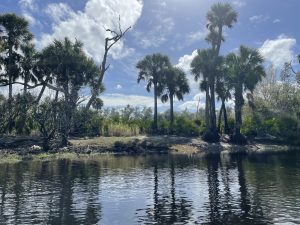
Myakka River State Park, formally established and opened to visitors in 1941, is one of Sarasota County’s unique and precious treasures. In late January, I had the opportunity to join a Florida Department of Environmental Protection biologist at Myakka River State Park to survey 14 miles of the Myakka River by kayak, to better understand the state of the river and the wildlife it supports, as well as some of the conservation issues this spectacular ecosystem faces.
In the blog series “Wild and Scenic”, you can experience a day in the life of a biologist on the Myakka River and get an inside perspective on what’s going on “beneath the surface”. If you haven’t read parts 1, 2, and 3 of the “Wild and Scenic” series, be sure to check them out first!
Lions, Tigers, and Bears, Oh My!
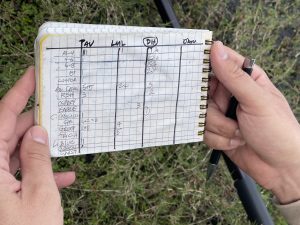
While we in fact did not see lions, tigers, or bears this day, we did see a variety of Florida’s charismatic and unique wildlife species. Species observed during this survey included many alligators of all sizes and developmental stages, freshwater turtles such as Florida softshells, and 41 peninsula cooters of all sizes basking on logs.
Along the sandy banks of the river, raccoon tracks gave away their nighttime activity, and both a non-venomous green water snake and a non-venomous brown water snake were seen carefully camouflaged amongst vegetation.
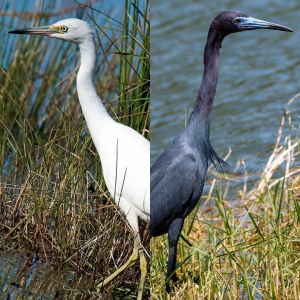
Some of the bird species observed included tricolored herons, black and turkey vultures, killdeer, limpkins, an American kestrel, osprey, belted kingfishers, great egrets, great blue herons, little blue herons (including one juvenile in its all-white plumage, and bald eagles.
We even saw one mystery animal, in the form of a large body that briefly arced at the surface of the water, giving us just a quick, far away glimpse of its back before it re-submerged. River otters, bobcats, manatees, wild turkeys, and Florida gar are a few other notable species that utilize the Myakka River and its watershed.
Protecting the Wild and Scenic Myakka River

It is clear that this productive ecosystem benefits many of our beloved and iconic Florida species, as well as the hundreds of thousands of patrons that visit the park each year for recreation, education, and wildlife observation.
The Myakka River’s state designation as a Wild and Scenic River offers protections in the form of more effective, cooperative management and regulations that are in place to conserve this ecosystem.
A True Gem Both Near and Far
Further protecting and recognizing this outstanding natural resource and its uniqueness not only in this state, but the country, can help ensure that this habitat remains healthy for generations to come.
Keep reading for an inside perspective on some of the conservation issues that Chris, Florida Department of Environmental Protection’s Myakka Wild and Scenic River biologist, has identified over years of surveys.
Reaching a Road Block

Around halfway into our journey, Chris pointed out a change in the river’s flow, where some water diverged from the main course to create its own paths due to the building pressure against Down’s Dam up ahead. As we approached this road, or rather, river block, we had to take a narrow and precarious path around to avoid colliding with the concrete obstruction, as well as downed logs and sticks.
While dams can at times benefit human interests, in systems like the Myakka River, as well as other rivers around the country and the world, they can pose a hazard to people recreating on the water, critically alter the hydrology of an area, and block wildlife from accessing their habitat.
Dam Removal
In 2022, the park service worked to remove a dam near Upper Myakka Lake to help restore part of the Myakka River’s natural floodplain, which provides important habitat for foraging bird species, mammals, amphibians, and more.
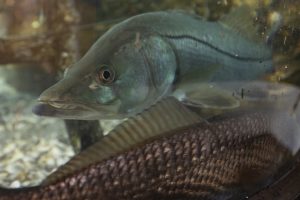
Dam removal can be a complicated and expensive process, especially where multiple stakeholders and landowners are involved. Environmental studies can be required to show the impacts of partial, full, or no dam removal on native species before moving forward with a project.

Free to Be
Ecologically and economically important wildlife, such as manatees, and large fish like snook and tarpon, move through the Myakka River.
Removing obstructions like Down’s Dam would allow them to pass freely and access different areas of the waterway from its headwaters in Manatee County, to the estuary in Charlotte County.
Illegal and Prohibited Activities

A variety of prohibited and detrimental activities occur along the Myakka River, within the boundaries of the state park, wilderness preserve, and other conservation lands. These include the unauthorized alteration of habitat and the creation of campsites, as well as poaching and fossil hunting.
While camping in non-designated areas may seem “harmless”, we noticed an increase in plastic pollution and other trash that can entangle and harm wildlife. Additionally, we observed areas where native plants had been cleared and trees cut down in order to create campsites and easier access to fossil hunting locations.
Illegal fossil hunting happens extensively on protected lands in the county, as individuals search for remnants of Florida’s past. Chris pointed out areas of erosion along the banks of the river, where soil was bare and collapsed, due to individuals transporting tools and materials for fossil hunting to and from the water. Learn more about Florida Department of Environmental Protection’s regulations for fossil hunting and collecting, and where it is permitted to do so.
Why Does it Matter?
Much of Florida’s habitats have been altered. The cumulative impact of many individuals cutting down trees to make clearings and to use for firewood, as well as building fires on the ground, trampling vegetation, eroding the river bank, and leaving behind waste degrades the health and function of this important ecosystem and reduces available wildlife habitat.

Invasive Aquatic Animal Species

Chris estimates that native fish species in the Myakka River are outnumbered by non-native or invasive species such as sailfin catfish, brown hoplo, and blue tilapia. These fish compete with native species for resources, and their burrowing and nesting behaviors can even cause erosion along the river bank.
Many invasive fish and animal species are established in Florida due to the release of pets into local natural areas. Never release unwanted pets into the environment, and instead, check out the Exotic Pet Amnesty Program, or find a qualified individual or organization in your community that is willing to take your pet. Learn more about invasive species in Florida and how you can help.
A Day in the Life Well Spent
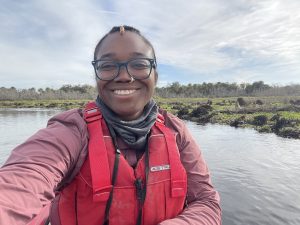 What an awesome day! If you made it to the end of this exciting day in the life of a biologist on the Myakka River, thanks for tagging along with me.
What an awesome day! If you made it to the end of this exciting day in the life of a biologist on the Myakka River, thanks for tagging along with me.
Biologists like Chris Oliver essentially act as voices and guardians for our wild and natural areas. Through systematic observation and surveys like the one described in this blog series, a picture of the ecosystem’s health is provided over time.
Because of this work, the impact of human use and activity can be measured and addressed to protect the places and wildlife that we know and love- providing us guidance on how to be better neighbors to nature. Be sure to visit the spectacular Myakka River State Park and recreate responsibly!
More in the “Wild and Scenic” Series
In the short blog series “Wild and Scenic: A Day in the Life of a Biologist on the Myakka River”, you can experience a day in the life of a biologist on the Myakka River and get an inside perspective on what’s going on “beneath the surface” of this important ecosystem.
Find other blogs in this series:
Wild and Scenic: A Day in the Life of a Biologist on the Myakka River Part 1
Wild and Scenic: A Day in the Life of a Biologist on the Myakka River Part 2
Wild and Scenic: A Day in the Life of a Biologist on the Myakka River Part 3
 1
1
